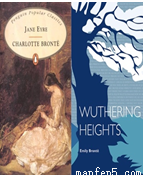题目内容
I always wanted to be a writer. When I was fifteen, I ______ to my English class that I was going to write my own books. My classmates fell out of their chairs laughing. “Don’t be ______. Only geniuses can become writers,” the English teacher said, “And you are getting Ds.” I was so
____ that I burst into tears.
That night I wrote a short sad poem about ______ dreams and mailed it to a newspaper. To my ______, they published it and sent me two dollars. I couldn’t believe it. I became a published and ______ writer. ______, I sold more poems. By the time I graduated, I had scrapbooks filled with my published work. I never ______ my writing to my teachers or classmates again as they were dream ______.
Years later, when I was ready to write my first novel, I already had four children. I wrote on my typewriter while they napped. It took nine months to finish. I ______ chose a publisher, put my book in a ______ and mailed it off. The letter I ______ read, “I wrote this book myself and I hope you’ll like it. Thank you.”
A month later I received a contract (合同) and a/an ______ to start another book. My book, Crying Wind, became a best seller. Translated into fifteen languages, it was sold ______.
People asked what college I ______ and what qualifications I have to be a writer. The answer is: “None”. I’m not ______ and I just write. To those who ______ writing, I’m shouting at you: “Yes, you can. Don’t ______ others.” I don’t write right but I’ve overcome the ______. Writing is ______, and anyone can do it.
1.A. announced B. admitted C. introduced D. advertised
2.A. optimistic B. enthusiastic C. silly D. sad
3.A. surprised B. confused C. worried D. ashamed
4.A. ambitious B. broken C. wild D. vivid
5.A. annoyance B. regret C. astonishment D. satisfaction
6.A. respected B. famous C. valued D. paid
7.A. Gradually B. Especially C. Finally D. Suddenly
8.A. submitted B. mentioned C. sold D. returned
9.A. savers B. makers C. killers D. seekers
10.A. randomly B. partly C. nervously D. naturally
11.A. collection B. bottle C. suitcase D. package
12.A. covered B. attached C. received D. published
13.A. request B. doubt C. instruction D. attempt
14.A. separately B. originally C. freely D. internationally
15.A. entered B. established C. attended D. operated
16.A. satisfied B. trained C. courageous D. hard-working
17.A. approve of B. dream of C. succeed in D. believe in
18.A. argue with B. rely on C. fight against D. listen to
19.A. uncertainties B. qualities C. difficulties D. curiosities
20.A. easy B. challenging C. boring D. logical




 listed above all else. Apprenticeships(学徒工作) were considered as a choice for dropouts(辍学者) rather than a brave career choice. Some young men and women didn’t fit into the school system, but preferred to find new starts, so they were allowed to leave school to focus their attention on making a living in the business world.
listed above all else. Apprenticeships(学徒工作) were considered as a choice for dropouts(辍学者) rather than a brave career choice. Some young men and women didn’t fit into the school system, but preferred to find new starts, so they were allowed to leave school to focus their attention on making a living in the business world.